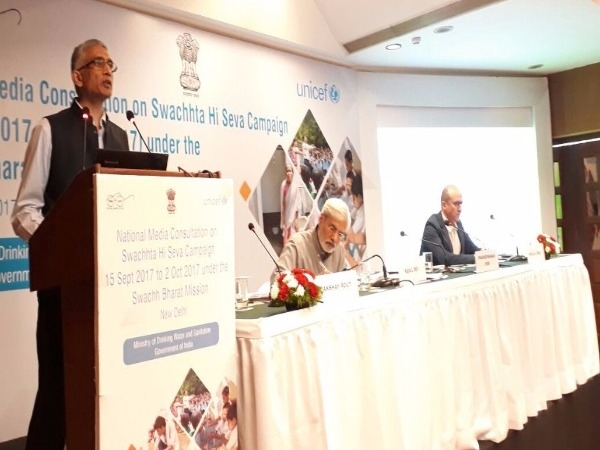Survey shows Rs. 50,000 per year saved by investing in a toilet; Cost-benefit ratio of a household is 430%

Secretary of sanitation Ministry, Parameswaran Iyer said that the Swachhata Hi Seva campaign is seeing the large-scale mobilization of people from all walks of life to undertake shramdaan for cleanliness and construction of toilets and cleaning up of public and tourist places. The participation has already begun in full swing. He also appreciated the being made by school children’s tremendous efforts, central police services and Defence personnel.
The progress made by the Swacch Bharat Mission in 5 states, almost 200 districts and 2.4 lakh villages across the country. Out of this 1.5 lakh villages have been declared as Open Defecation Free and have ranked in Village Swacchta Index on the basis and liquid waste management in the villages.
An Independent Survey conducted by the Quality Council Of India across 1,40,000 households showed that 91% of household use toilets. Iyer urged media to spread the message of sanitation and cleanliness during the fortnight.
Nicolas Osbert, Chief, WASH, UNICEF, India said that it was heartening to note that, with the Swachh Bharat Mission and the personal leadership of India’s Prime Minister himself, concrete action is happening on the ground with respect to changing old habits through the genuine focus on behaviour change.
To measure the economic impact of sanitation at a household level, a survey conducted by UNICEF in 12 states of the country across 10000 households. Osbert said that in fully ODF communities, a family invests in a toilet will save Rs. 50,000 per year by considering the medical costs averted the value of mortality averted, and the Value of time-saving. The study on fully ODF communities showed that the cost-benefit ratio of a household is 430% which means that if a family invests one rupee in sanitation then it saves Rs. 4.30. He added that for the poorest quintile of the population in a community these benefits are the highest, that improved sanitation helps the poorest of the poor the most which was an encouraging step.